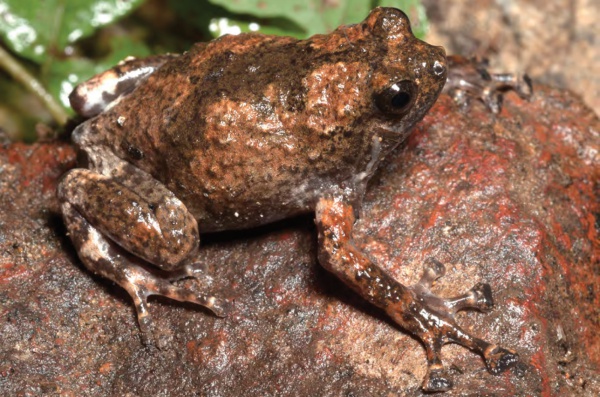Facts About Kalinga narrowmouth toad
The Kalinga narrowmouth toad, an uncommon species in the Microhylidae family, is indigenous to the Philippines. This diminutive amphibian can be found in diverse habitats, ranging from lowland and montane forests to agricultural areas and plantations. Regrettably, it is contending with significant threats due to habitat destruction.
Visually distinctive, the Kalinga narrowmouth toad features a stout body and a truncated head. Its snout is short and adorned with tubercles (small, knobby bumps) that decorate its face, back, and sides. The toad's underside has a granular texture, while its back is characterized by a bluish-black hue interspersed with reddish-brown markings. This species is found on Luzon, Polillo Island, and Palaui Island, primarily inhabiting rainforests and forest edges.
Breeding season is a notable period for these toads. Males emit loud, slightly undulating trills to attract females, calling from various locations. Intriguingly, different varieties of this species have been identified across the Philippines, suggesting the possibility of undiscovered species.
The Kalinga narrowmouth toad's habitat is somewhat restricted, encompassing an area of less than 20,000 square kilometers, with populations spread thinly. The primary threat it faces is the loss of forested areas. While the status of their overall population trend remains uncertain, it is clear that they require our attention and protection.
